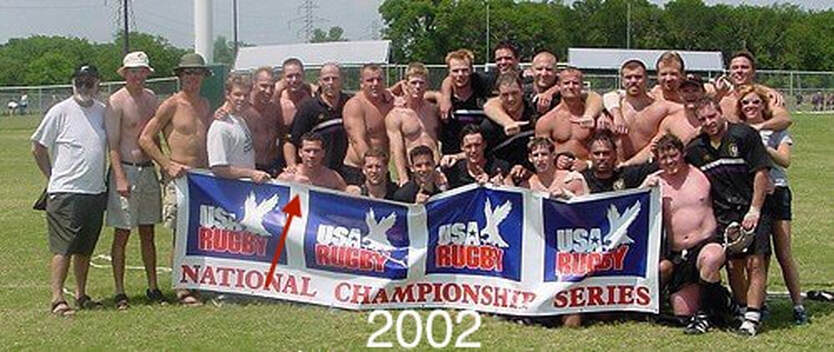Is your student-athlete complaining of back pain?
Hi, I'm Dr. Wegmann-
As a leading spine specialist, I've dedicated my life to understanding and treating spine-related issues, especially in athletes. Spine pain in athletes is a significant concern, not just for its immediate impact but also for its potential long-term effects.
Who am I?
Well, I was a former three-sport athlete in high school, playing football, basketball, and baseball. I was also nominated for the Indiana high school baseball all-star team as a catcher.
In college I played rugby on scholarship as a Men's Division I athlete, competing in the National Finals.
Hi, I'm Dr. Wegmann-
As a leading spine specialist, I've dedicated my life to understanding and treating spine-related issues, especially in athletes. Spine pain in athletes is a significant concern, not just for its immediate impact but also for its potential long-term effects.
Who am I?
Well, I was a former three-sport athlete in high school, playing football, basketball, and baseball. I was also nominated for the Indiana high school baseball all-star team as a catcher.
In college I played rugby on scholarship as a Men's Division I athlete, competing in the National Finals.
Here's some things we need to consider if your student-athlete is complaining of back pain in athletics.
1. Causes of Spine Pain in Athletes
Spine pain in athletes can arise from various sources, including:
2. Prevention Strategies
Preventing spine pain is critical for athletes. Key strategies include:
3. Treatment Options
Treatment should be tailored to the individual athlete, but common approaches include:
4. Importance of Holistic Approach
A holistic approach is vital to the treatment and prevention of injuries. This approach considers the athlete's entire lifestyle and mental health. Nutrition, sleep, stress management, and mental well-being all play significant roles in spine health and overall athletic performance.
Spine pain in athletes is a complex issue requiring a multifaceted approach. Prevention through proper training, technique, and equipment is key, as is prompt, personalized treatment. By understanding the complexity of spine health in the context of athletics, athletes can not only manage pain effectively but also enhance their overall performance and career longevity.
1. Causes of Spine Pain in Athletes
Spine pain in athletes can arise from various sources, including:
- Muscle Strain and Ligament Sprain: These are common in sports requiring sudden twists or heavy lifting.
- Disc Injury: Activities that involve repetitive impact or heavy lifting can lead to disc herniations or degeneration.
- Scoliosis (abnormal curvature of spine)
- Facet Joint Pain: Overuse or acute trauma can cause pain in the joints of the spine.
- Spondylolysis and Spondylolisthesis: These conditions, often found in athletes, involve stress fractures or slippage of vertebrae.
- Poor Posture and Technique: Incorrect form during sports can place undue stress on the spine.
2. Prevention Strategies
Preventing spine pain is critical for athletes. Key strategies include:
- Proper Spinal Alignment assessed with our digital Structure scan.
- Strength and Flexibility Training: A balanced regimen that strengthens the core and improves flexibility can reduce the risk of spine injuries.
- Adequate Rest and Recovery: Overtraining can increase the risk of spine injuries. Rest and recovery are as important as active training.
- Ergonomic Equipment: Using the right equipment, like supportive footwear and protective gear, can help prevent spine injuries.
3. Treatment Options
Treatment should be tailored to the individual athlete, but common approaches include:
- Chiropractic Care: Adjustments and manipulations can help in certain cases, particularly with alignment issues.
- Rest and Ice: Initial treatment often involves rest and ice to reduce inflammation.
- Physical Therapy: Targeted exercises can strengthen the muscles supporting the spine and improve flexibility.
- Pain Management: In some cases, medication or injections may be necessary to manage pain.
- Surgery: This is generally a last resort, used only for severe injuries that do not respond to other treatments.
4. Importance of Holistic Approach
A holistic approach is vital to the treatment and prevention of injuries. This approach considers the athlete's entire lifestyle and mental health. Nutrition, sleep, stress management, and mental well-being all play significant roles in spine health and overall athletic performance.
Spine pain in athletes is a complex issue requiring a multifaceted approach. Prevention through proper training, technique, and equipment is key, as is prompt, personalized treatment. By understanding the complexity of spine health in the context of athletics, athletes can not only manage pain effectively but also enhance their overall performance and career longevity.
But don't just take my word for it, listen to some of the athletes I have cared for:




